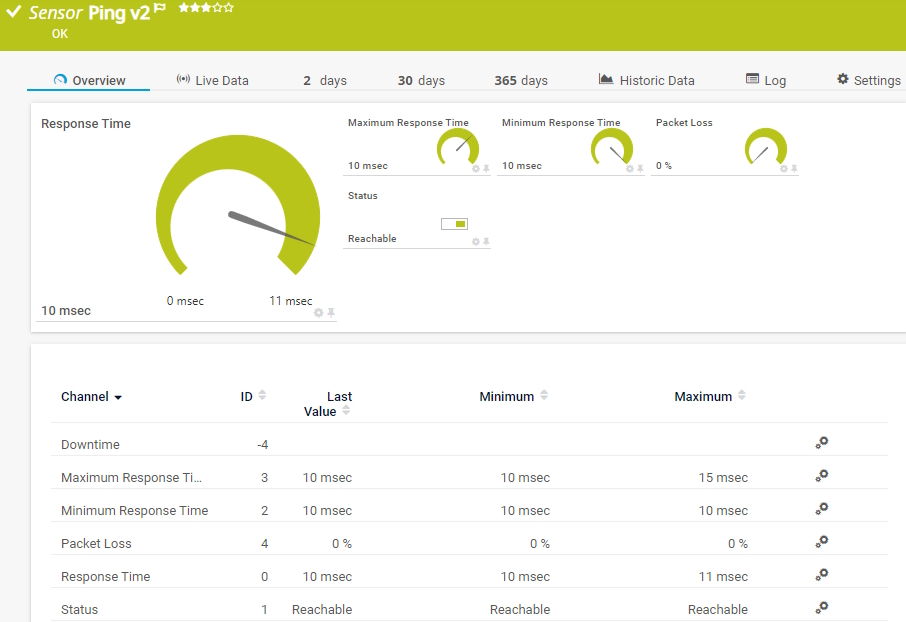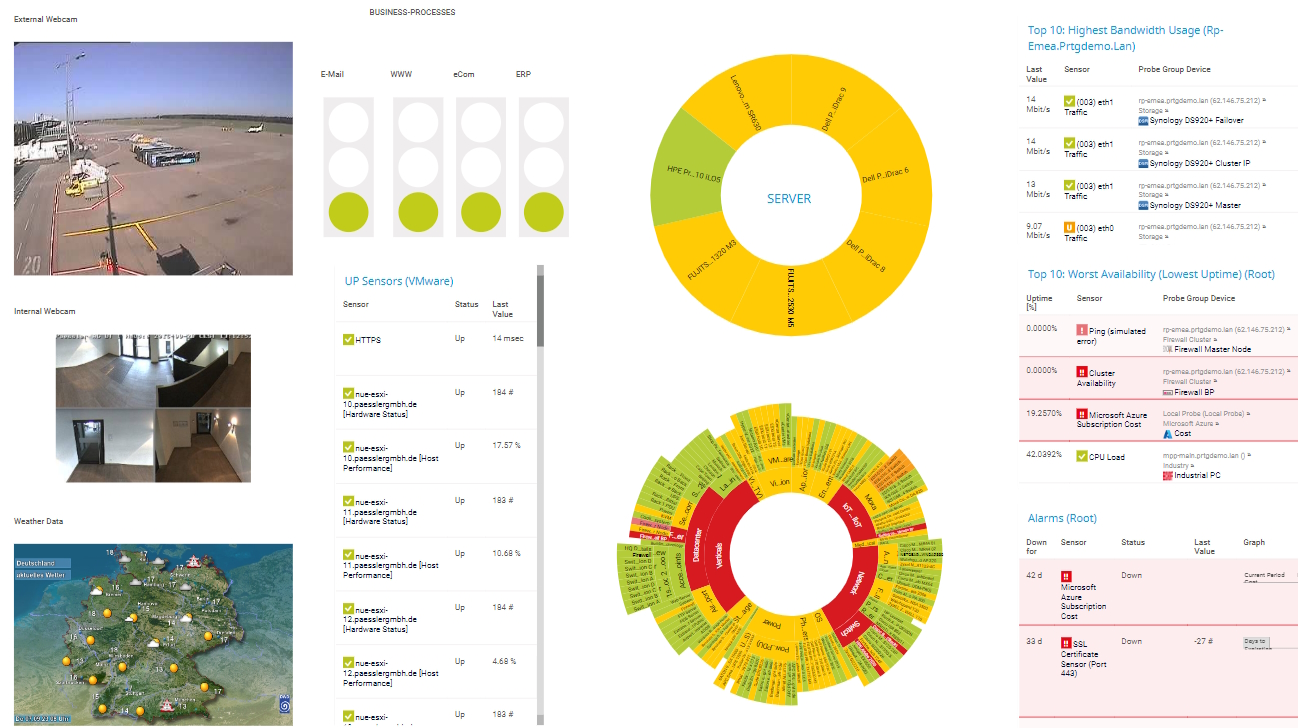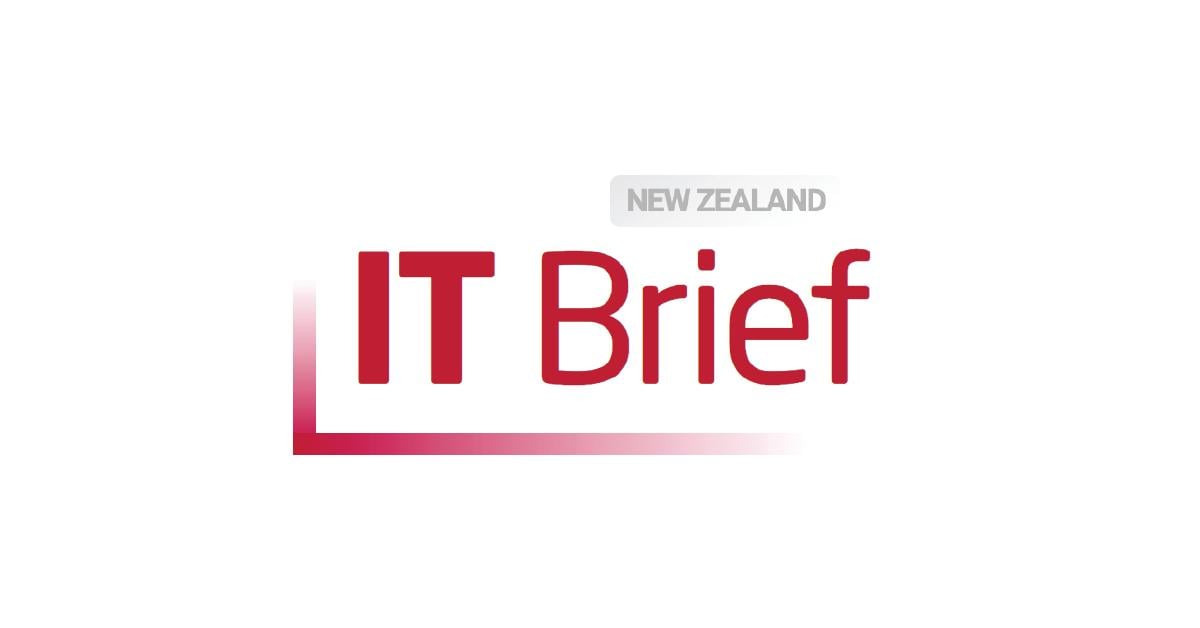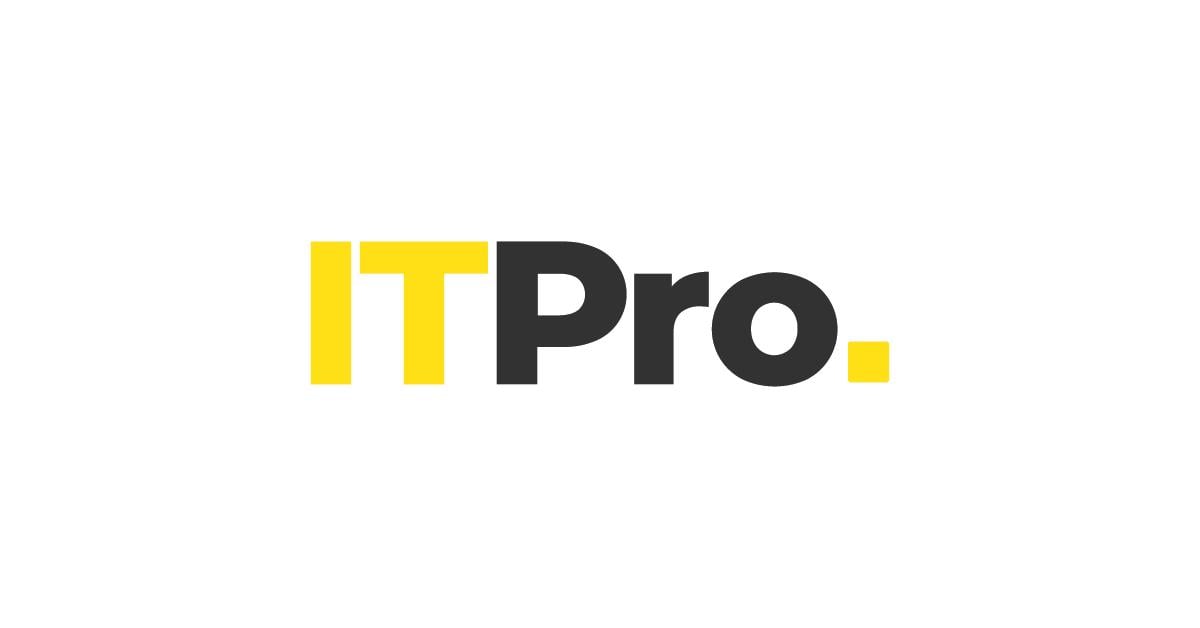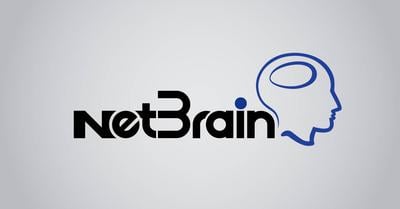LAN scanner with PRTG
All-in-one monitoring of local area networks
- Make sure your LAN runs stable, reliable, and fast
- All-in-one monitoring tool with LAN scanner capabilities
- Set up in minutes with automatic network discovery
PRTG LAN scanner: What you’ll find on this page
PRTG makes network scanning as easy as it gets
Custom alerts and data visualization let you quickly identify and prevent bandwidth bottlenecks, low performance, and other issues in your LAN.
Practical benefits of the LAN scanner PRTG
Ensure efficient workflows
Maximize employee productivity with the LAN scanner capabilities of PRTG. Uncover connectivity problems to keep applications running quickly and smoothly, and ensure the availability of computers, printers, servers, and other endpoints round the clock.
Detect bottlenecks quickly
PRTG’s LAN scanner automatically detects bandwidth bottlenecks to help you prevent downtime. If a LAN bottleneck occurs due to overloaded routers or switches, you will be promptly notified by customizable alerts via SMS, email, in-app push notifications, and other methods.
Optimize performance
Keep a constant eye on LAN traffic to detect and resolve bandwidth overloads before they lead to errors and downtime. What’s more: PRTG constantly stores historical data that you can analyze to enhance your network’s capacity and optimize network performance.
What LAN scanning looks like in PRTG
Diagnose network issues by continuously tracking the health, availability, and performance of your local area network. Show network traffic, hardware parameters, bandwidth usage, uptime, and other key metrics in real time. Visualize monitoring data in clear graphs and dashboards to identify problems more easily. Gain the overview you need to troubleshoot your entire infrastructure.
Start scanning your LAN with PRTG and see how it can make your network more reliable and your job easier.
6 reasons to use PRTG as your LAN scanner
The LAN scanner feature of Paessler PRTG detects and sorts the devices in your network, plus all this:
Precise overview of your local area network
Scan results presented as a device tree
Quicker and more effective troubleshooting
Stops problems in the local network before they arise
Uninterrupted availability and highest level of security
Best possible performance for your LANs
Your LAN scanner at a glance – even on the go
Set up PRTG in minutes and use it on almost any mobile device.
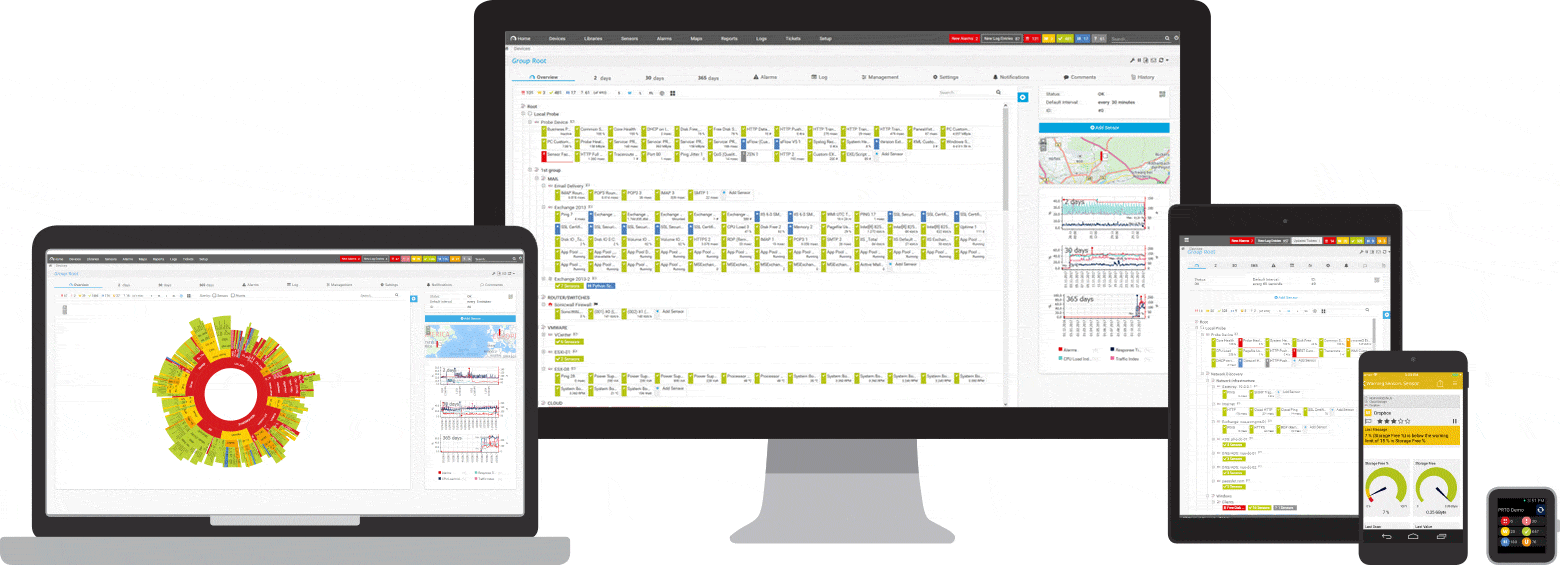

Find the root cause of the problem with our PRTG LAN scanner solution
Real-time notifications mean faster troubleshooting so that you can act before more serious issues occur.
PRTG is compatible with all major vendors, products, and systems
PRTG setup is quick and easy with auto discovery
Set up in minutes
PRTG’s auto-discovery makes it easy to start monitoring your LAN in a few short minutes. Plus, you can make changes to your settings anytime and include or remove devices and sensors from your monitoring environment as needed.
Scan automatically
Upon installation, the Auto-Discovery feature scans for all accessible devices in the LAN and helps you configure your sensors. PRTG shows you the available devices in your network, as well as suitable sensors for monitoring them.
Repeat as needed
You can perform the network discovery once or repeatedly, such as via a regular LAN scan. In each case, newly created devices are added to the device tree with the corresponding sensors. PRTG notifies you whenever it detects a new device in your network or if an error has occurred.
Create innovative solutions with Paessler’s partners
Partnering with innovative vendors, Paessler unleashes synergies to create
new and additional benefits for joined customers.
ScriptRunner
With ScriptRunner, Paessler integrates a powerful event automation platform into PRTG Network Monitor.
LAN scanning with PRTG uncovered
The LAN scanner feature of Paessler PRTG detects and sorts the devices in your network, plus all this:
LAN scanning protocols
PRTG works with various protocols for LAN monitoring, including SNMP, packet sniffing, and NetFlow. NetFlow and packet sniffing are used to monitor traffic, while SNMP is used to monitor your network and keep you updated on its performance.
LAN scanning devices
PRTG scans your entire IT infrastructure and adds all reachable network devices it can find to your monitoring setup, including servers, routers, firewalls, switches, workstations, computers, printers, even IoT hardware devices, and much more.
Beyond LAN scanning
PRTG runs tirelessly in the background, keeping a constant eye on all network components so administrators can focus on other work – and issues alerts when preset (but customizable) warning or error thresholds are exceeded.
“Excellent tool for detailed monitoring. Alarms and notifications work greatly. Equipment addition is straight forward and server initial setup is very easy. ...feel safe to purchase it if you intend to monitor a large networking landscape.”
Infrastructure and Operations Engineer in the Communications Industry, firm size 10B - 30B USD
Explore our preconfigured PRTG sensors for LAN monitoring
PRTG comes with more than 250 native sensor types for monitoring your entire on-premises, cloud, and hybrid cloud environment out of the box. Check out some examples below!
PRTG makes network scanning as easy as it gets
Custom alerts and data visualization let you quickly identify and prevent bandwidth bottlenecks, low performance, and other issues in your LAN.

PRTG: The multi-tool for sysadmins
Adapt PRTG individually and dynamically to your needs and rely on a strong API:- HTTP API: Access monitoring data and manipulate monitoring objects via HTTP requests
- Custom sensors: Create your own PRTG sensors for customized monitoring
- Custom notifications: Create your own notifications and send action triggers to external systems
- REST Custom sensor: Monitor almost everything that provides data in XML or JSON format
We asked: would you recommend PRTG?
Over 95% of our customers say yes!
Paessler conducted trials in over 600 IT departments worldwide to tune its network monitoring software closer to the needs of sysadmins.
The result of the survey: over 95% of the participants would recommend PRTG – or already have.
Still not convinced?
More than 500,000
sysadmins love PRTG
Paessler PRTG is used by companies of all sizes. Sysadmins love PRTG because it makes their job a whole lot easier.
Monitor your entire IT infrastructure
Bandwidth, servers, virtual environments, websites, VoIP services – PRTG keeps an eye on your entire network.
Try Paessler PRTG
for free
Everyone has different monitoring needs. That’s why we let you try PRTG for free.
Start scanning your LAN with PRTG and see how it can make your network more reliable and your job easier.
|
PRTG |
Network Monitoring Software - Version 25.1.104.1961 (April 7th, 2025) |
|
Hosting |
Download for Windows and cloud-based version PRTG Hosted Monitor available |
Languages |
English, German, Spanish, French, Portuguese, Dutch, Russian, Japanese, and Simplified Chinese |
Pricing |
Up to 100 sensors for free (Price List) |
Unified Monitoring |
Network devices, bandwidth, servers, applications, virtual environments, remote systems, IoT, and more |
Supported Vendors & Applications |
|


